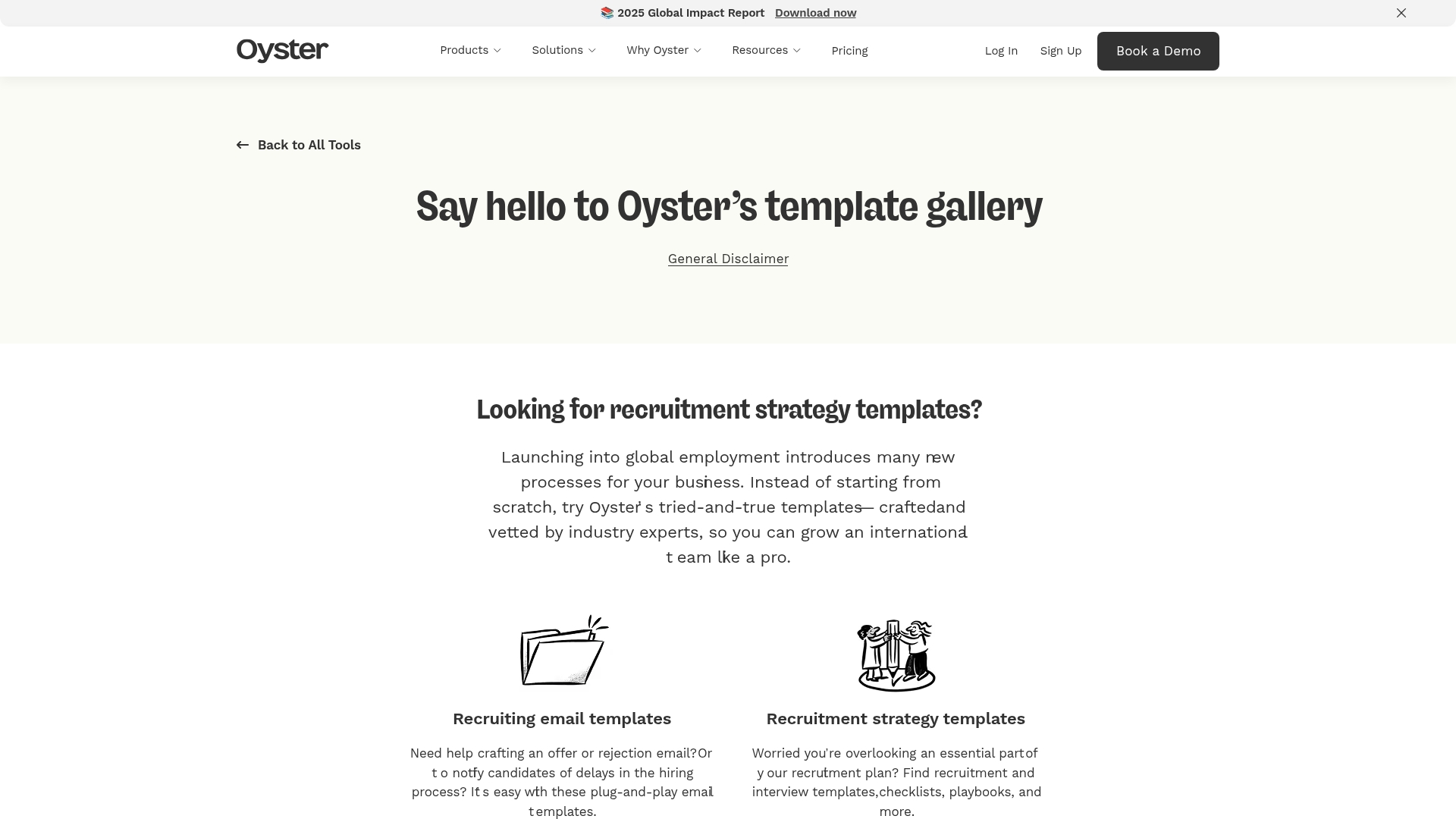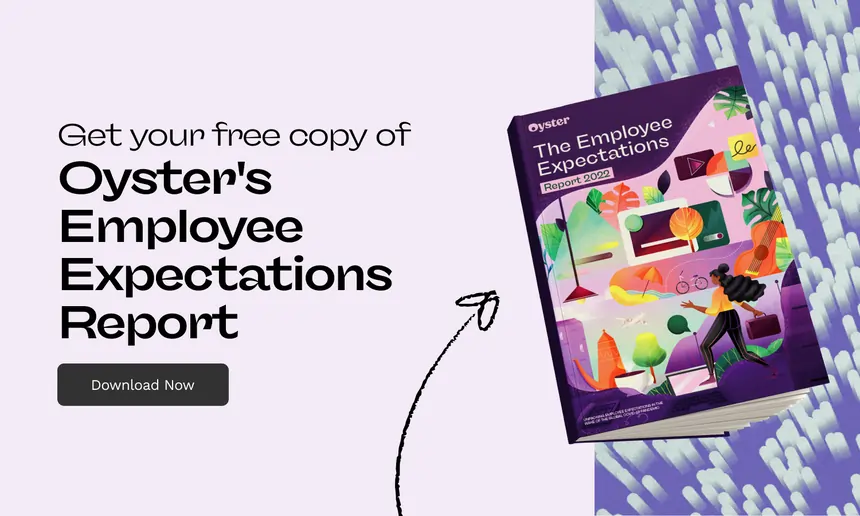What is talent mobility?

Talent mobility
Talent mobility is the ability of employees to move successfully from one role to another within the same organization. Companies that emphasize talent mobility create growth opportunities for their employees. Leaders at these companies need to recognize critical skills and abilities in their employees to advance them into suitable new positions, especially as 90% of organizations report they are redesigning jobs to meet evolving business needs.
Using a talent mobility strategy is the opposite of focusing on outside talent when positions become available within an organization. Finding ways to fill open positions with employees who already work for the company is the goal of a talent mobility program.
What do employees expect from you as an employer? See our survey findings in Oyster’s Employee Expectations Report.
Types of talent mobility
Talent mobility doesn’t necessarily refer to moving internal employees from one position to a different position at a higher job level. While internal promotions, or vertical mobility, are certainly part of talent mobility, they’re only one part of it. Horizontal mobility—moving internal employees from one role to another at the same job level—is another aspect of talent mobility.
Benefits of emphasizing talent mobility
Emphasizing talent mobility doesn’t only benefit the employees at an organization. Companies that implement a talent mobility strategy also benefit in several ways.
Improving employee engagement
Engaging employees is a constant challenge for employers, but it’s necessary to help them reach their full potential. Focusing on talent mobility gives employees new goals to work towards and concrete rewards for contributing to the company. As a result, companies that emphasize talent mobility are likely to see higher employee engagement and satisfaction, which is critical given that issues related to engagement and culture are the most prominent reasons employees leave their jobs.
Boosting employee retention rates
Retaining top talent is vital to any company's success, particularly in a difficult labor market where 51% of employees are watching for or actively seeking new jobs. Emphasizing talent mobility helps companies keep their current team members by giving them opportunities to grow their careers. Employees at these companies know that their employers are invested in their futures and are thus more likely to stick around.
Increasing productivity levels
Going through the process of hiring a new external candidate for a role is time-consuming and expensive. Employers can significantly reduce onboarding time and increase employee productivity by focusing on talent mobility instead. Even employees who haven’t yet moved roles may be motivated to increase their productivity levels and increase their chances of progressing in their careers.
Developing a talent mobility strategy
A successful talent mobility program doesn't happen by accident—it requires a clear strategy. Think of it as a roadmap connecting your company's goals with your employees' career aspirations.
Your strategy should cover these key elements:
Skills identification: Map out critical skills and where they exist in your organization
Growth pathways: Create clear routes for advancement and lateral movement
Data-driven matching: Use tools and insights to connect the right people with the right opportunities
The goal? Make every internal move intentional and valuable for both the team member and your business.
Book a demo to learn more.
Global Employment Templates and Checklists

How to foster talent mobility
Implementing a talent mobility framework is more complicated than simply selecting internal candidates for open roles rather than hiring external ones. Leaders interested in using this strategy should apply the following best practices to facilitate talent mobility.
Emphasize transparency
For a talent mobility program to be as effective as possible, the organization's workforce needs to understand the program. Companies should clearly detail how the program works and what the leadership team hopes to accomplish through it.
It's essential to outline the opportunities available to employees so there's no ambiguity. Employees shouldn't have to guess about the company's approach to internal mobility and talent management—leadership should make that perfectly clear.
Allow for multi-directional moves
It's common for companies and employees alike to get stuck in a one-dimensional view of how a given career path should progress. In modern business, however, such static careers are less and less common.
Sometimes, the right move for an employee will be from one team to another instead of staying within the same team. If an employee's skills and abilities make more sense for a position in a different team or business unit, leadership should support them in making that move.
Gain buy-in from stakeholders
Ideally, support for the talent mobility program will start at the top of the company with the highest executives. Buy-in from leaders will significantly increase the likelihood that the program takes root and is successful. The support for talent mobility can then flow down through the rest of the company until everyone realizes the value of the program.
Focus on learning and development programs
The existing employees within a company may not have the skills or training to fill open roles—a significant issue when a World Economic Forum report found 54% of employees require significant reskilling. However, companies can help their workforce develop these skills by investing more in learning and development programs. Focus specifically on programs that will make employees more effective at their current roles and better equipped to take on open roles or opportunities.
Talent mobility best practices
Putting your strategy into action requires a few key practices. Here are some simple ways to make talent mobility a success:
Communicate openly: Make sure all employees know what roles are available and how they can apply. A transparent process builds trust and encourages participation.
Encourage cross-functional projects: Give people a chance to work with different teams. It's a low-risk way for them to build new skills and explore other areas of the business.
Map career paths: Work with team members to show them what their future at the company could look like. When people see a path forward, they're more likely to stay.
Leverage technology: Use tools to track skills and identify internal candidates. The right platform can help you spot hidden talent within your own teams.
Common talent mobility challenges
Even with the best intentions, you'll likely face a few common challenges:
Talent hoarding: Managers reluctant to let go of their top performers
Limited visibility: Employees being unaware of available opportunities
Inconsistent processes: Difficulty moving between departments due to unclear procedures
The good news? Acknowledging these hurdles is the first step to overcoming them with clear communication and supportive leadership.
Global talent mobility
Typically, employers think about talent mobility in terms of their domestic employees or employees within a specific location. However, talent mobility also functions on a global scale.
As employers expand their hiring efforts to include talent from all over the world, they should also expand their idea of talent mobility. Moving international talent between roles isn’t just possible—it can be hugely successful. With the rise of remote work, global talent mobility doesn’t even need to include moving talent from one country to another. International employees working remotely can move from role to role as their employer needs without leaving their homes.
Global talent mobility comes with challenges, such as complying with local labor laws and managing employee relocation as necessary. Working with a global employment platform can make global talent mobility much more manageable, though.
Building a mobility-first culture with global reach
Ultimately, talent mobility is more than just a process—it's a cultural shift. It's about viewing your employees as your greatest asset and investing in their growth. By creating opportunities for internal movement, you build a more engaged, resilient, and loyal workforce that can adapt to whatever comes next.
As your team becomes more distributed, this mindset becomes even more powerful. With a global employment platform, you can extend these opportunities to everyone, no matter where they live. Ready to build a team without borders? Oyster makes it simple to start hiring globally.
About Oyster
Oyster enables hiring anywhere in the world—with reliable, compliant payroll, and great local benefits and perks.

Related Resources












